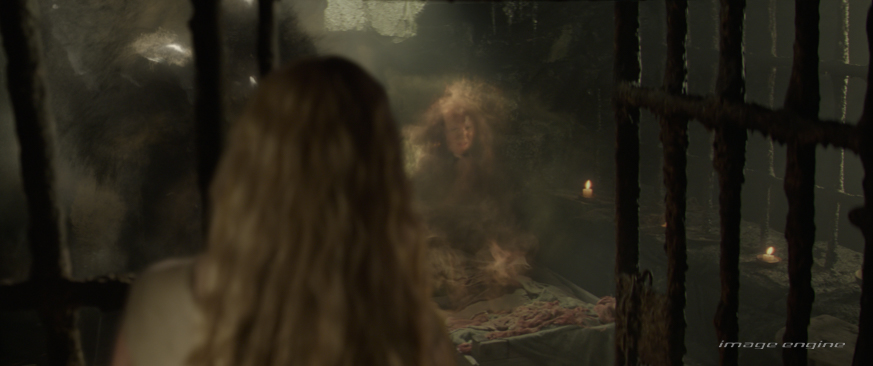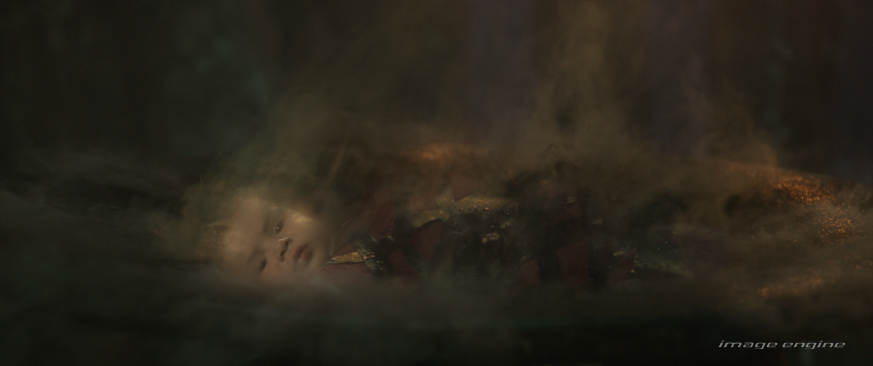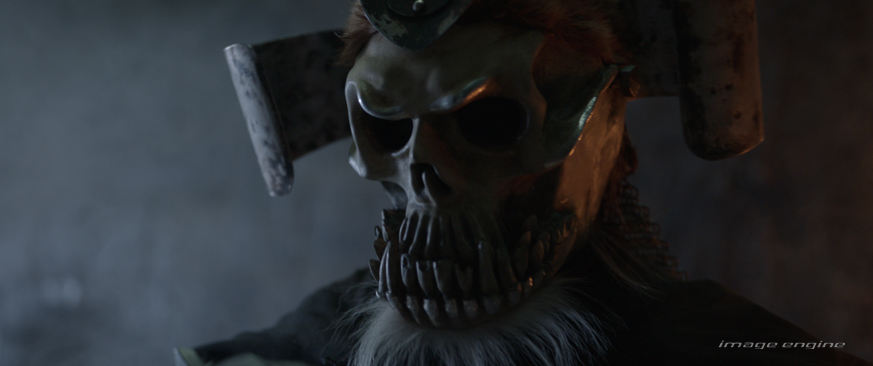Willow Case Study

Case Study
Image Engine returned to the much-loved Tir Asleen kingdom for Jonathan Kasdan's Disney+ series, Willow. Discover how the studio teamed up with the series' ragtag group of adventurers and invoked the spirits of fan-favourite characters using the magic of VFX.
View portfolio pageRon Howard’s 1988 fantasy adventure film Willow ends on a happy note: Willow Ufgood and his allies Sorsha (Joanne Whalley) and Madmartigan (Val Kilmer) defeat the evil Queen Bavmorda, and it seems all is well in the kingdom of Tir Asleen. Over the years, the lack of follow-up suggested peace reigned eternal in Willow’s kingdom of brownies, trolls, and sorceresses. However, over three decades later, Disney+’s new series reveals Tir Asleen has yet more thrilling stories to tell.
In the Disney+ series, the now-Queen Sorsha finds her son, Airk, has gone missing. This occurrence sets off a series of fateful events, culminating in a ragtag group of heroes – comprising a princess, a prince, a knight, a criminal, a kitchen maid, and Willow himself – having to venture beyond Tir Aisleen’s evil-repelling barrier to find Airk and possibly save the world.
Image Engine delivered 156 shots across the fourth and sixth episodes of Willow Ufgood’s new fantastic voyage, comprising a mix of environment work, sorcerous effects, and reviving some familiar faces from years long past.
“I loved the original Willow as a kid – it was projected over and over in a nearby cinema,” begins Francisco Palomares, Image Engine’s Compositing Supervisor. “It’s a fantasy movie with a great journey, lots of action, and tremendous on-screen character presence. So, of course, I was thrilled to bring Willow back for a new generation – and the other grown-up fans like me!”
Smokin’
Episode four, “The Whispers of Nockmaar”, sees Willow’s unlikely band of heroes take refuge from a dangerous storm in Bavmorda’s now-abandoned castle. While there, Willow prepares to exorcise Graydon, the Prince of Galladoorn, who has been infected by a Lich’s demonic influence. While retrieving ingredients for the ritual, Airk’s sister Kit experiences visions of Bavmorda and other characters – all returning from the original Willow.
“We took shots of the characters from the 1988 movie and turned them into ghostlike entities using various smoke and fluid simulations, with billowing, magical fumes pouring off Bavmorda, General Kael, Fin Raziel, and a younger Willow,” says Martyn Culpitt, Visual Effects Supervisor. “It was very cool to explore new ideas and come up with a unique look that met the brief we were given.”
Although each effect is fundamentally the same, Image Engine designed a slightly different look for each. “For example, some effects are murkier, others more liquid or with more of a vaporous, ethereal feel,” says Francisco. “The aesthetic of each effect was led by the persona, the acting, and readability, as we wanted to ensure the actor and their performance were easily recognizable. The effect had to make sense in terms of narrative and give purpose to what was on screen.”


To create the smoky look, Image Engine built simple 3D models of each character. “We rotomated the actors in each shot and rigged models, so we could use them to generate movement in the FX simulations,” explains Heribert Raab, Lead FX TD. “We could also use plate projections to feed the colour into the smoke simulation and drive the effect in a unique way. For example, we used the shadow and brightness of the plate to manipulate the smoke temperature in the solver, which gave us control over how calm or aggressive we wanted the smoke dynamics to feel. We also used rotomation geometry features like curvature to drive the density of the smoke emission, which enabled us to create clear readability of specific body parts and features. This readability was critical for face close-up shots where the actor’s performance had to shine through.”


To enhance the effect’s fantastical nature, Image Engine added subtle modifications, such as advected particles, which carried some of the plate colours. “The particle simulations then went through heavy post-processing and second simulations to shape them into a more stringy structure that sold the effect’s magical nature,” says Heribert. “We also created additional particle simulations to sharpen details on the smoke simulation, which we added in comp, and we used discs instead of spheres for particle rendering to avoid a kind of Styrofoam look in the effect.




“For one character, we added 12 layers of particle and smoke simulation renders with countless AOVs like speed and density passes to get maximum creative freedom in comp,” adds Heribert. “However, given the FX was there to serve the story, we always tried to keep the layers to a minimum. The most critical thing was that the audience could read the characters and what was happening.”
Image Engine added final touches to the smoky look in compositing, such as distortion, transparencies, and plate integration and manipulation to have the characters feel ghostlike yet still present and able to interact with their environment.
Old meets new
Combining Willow’s 1988 footage with the plates filmed for the new series presented one of episode four’s biggest challenges, partly because the original Willow plate footage was filmed in anamorphic format, while the series used spherical lenses. “As one could imagine, this presented some challenges when lining up characters,” says Francisco. “Regardless, we worked hard to ensure everything looked just right.”


The original film’s shots of Bavmorda were particularly tricky to match with the new footage. “Bavmorda was in fewer shots than other characters but proved the most challenging,” says Francisco. “The nature of the plates and how they were lit in the original movie didn’t sit right with the new ones. She also moved a lot in this mini-sequence, which presented a few challenges and forced us to adjust our FX simulations. Nevertheless, we wanted to make something special out of Bavmorda as she’s such a defining character from the original film, so we worked hard to deliver that consistency and ensure the shots felt just right.”
The Image Engine team also focused on Bavmorda’s second-in-command, General Kael. “It was amazing to have so much creative freedom for this character and explore new ideas,” says Martyn. “To create this character, we built a simple asset to project the plate onto for the smoke simulations. The animation team then matched the movement of Kael’s cape and body with the asset so the simulations would track and follow the plate.”


Later in the fourth episode, Willow, Dove, and the infected Graydon stand in a candle-lit chamber as Bavmorda fires a powerful lightning spell into the air, causing the character to break up and turn into billowing red smoke that rises into the air. “Bavmorda’s spell was a big moment, so we dedicated ourselves to making sure the spell felt dynamic and exciting,” says Martyn. “FX provided the lighting team with a series of elements that had been lit before coming to compositing. We then ensured the lightning created subsurface, shadows, and patches of bright light going through the smoke for maximum realism. The shot came together well!”


Creating chasms
In episode 6, “Prisoners of Skellin”, Willow and Kit are captured by trolls and brought to an underground city. Image Engine’s sequence for the episode sees the captive heroes prodded at by a pair of trolls and their spears as they’re forced onto a platform. Gibbets hang ominously from above, while below lies a deep chasm, from which seams of molten rock cast red light into the shadow.




On set, there was no drop but a green-screen floor. Image Engine replaced this flooring with the deep subterranean cleft using a blend of matte paintings and a full-CG environment build.
“The audience spends a lot of time in this underground cavern, so we wanted to make it feel immersive and draw them into the episode. It was therefore critical we created a consistent look across all shots, from levels of colour temperature to depth of field and atmos density,” says Francisco. “Depending on the camera angle, we replaced the backgrounds with either CG or matte paintings. For our digital chasm walls, we combined rock shapes, textures, and various lava cracks for our digital chasm walls, ensuring the digital assets resembled the qualities of their physical on-set counterparts.”


As the scene progresses, earthquakes cause falling debris and dust trails to cascade from above. These effects were also delivered by Image Engine. “As the camera angles in these shots are so pronounced, we did not feel 2D elements would deliver the quality we wanted, so we created these effects using simulations,” says Francisco.
A new adventure
Disney+’s Willow is an extraordinary adventure and an impressive feat in that it revives not only the characters and settings of its predecessor, but also much of its indefinable magic. This achievement was, in part, due to the visual effects that blended the classic feel of 1988’s Willow with the higher visual expectations of audiences today.

